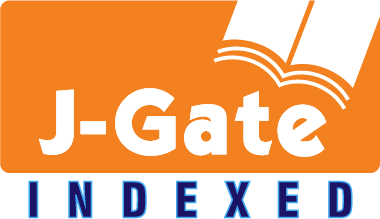MATEMATİKTE YARATICILIK
DOI:
https://doi.org/10.26809/joa.2018548641Özet
Bu çalışmanın amacı matematiksel yaratıcılığı tartışmak ve matematik ve yaratıcılık arasındaki ilişkiyi ortaya koymaktır.
İndirmeler
Referanslar
2. Aydoğdu, N. & Yüksel, Ġ. (2013). The relationship between prospective mathematics teachers‟ beliefs and attitudes towards history of mathematics and their creativeness level. Journal of Research in Education and Teaching, 2(4), 186-194.
3.Bessis, P. & Japui, B. (1973). Yaratıcılık nedir? (S. Gürbaşkan, Trans.). İstanbul: Reklam Ofset Tesisleri.
4.Birgin, O. & Baki, A. (2012). An investigation of the purposes of the measurement and assessment practice of primary school teachers within the context of the new mathematics curriculum. Education and Science, 37(165), 152-167.
5. Büyüköztürk, ġ., Kılıç-Çakmak, E., Akgün, Ö. E., Karadeniz, ġ. & Demirel, F. (2014). Bilimsel araştırma yöntemi, Ankara: Pegem Akademi.
6. Chamberlin, S. A. & Moon, S. M. (2005). Model-eliciting activities as a tool to develop and identify creatively gifted mathematicians. Prufrock Journal, 17(1), 37-47.
7. Chiu, M. S. (2009). Approaches to the teaching of creative and non-creative mathematical problems. International Journal of Science and Mathematics Education, 7(1), 55-79.
8. Ervynck, G. (1991). Mathematical creativity advanced mathematical thinking (pp. 42-53), Springer.
9.Fraenkel, J.R., Wallen, N.E. & Huy, H.H. (2011). How to Design and Evaluate Research in Education (Eighth Edition). Mc Graw Hill Companies: New York.
Haylock, D. W. (1987). A framework for assessing mathematical creativity in school chilren. Educational Studies in Mathematics, 18(1), 59-74.
10.Haylock, D. (1997). Recognizing mathematical creativity in school children. International Reviews on Mathematical Education, 29(3), 68-74.
11. Johnson, B. & Christensen, L., (2014). Educational research: Quantitative, Qualitative, and mixed approaches (Çev. Ed. Selçuk BeĢir Demir), Ankara: Eğiten Kitap.
12. Kattou, M., Kontoyianni, K., Pitta-Pantazi, D., & Christou, C. (2012). Connecting mathematical creativity to mathematical ability, 45(2), 167-181.
13. Kwon, O. N., Park, J. H., & Park, J. S. (2006). Cultivating divergent thinking in mathematics through an open-ended approach. Asia Pacific Education Review, 7(1), 51-61.
14. Laycock, M. (1970). Creative mathematics at Nueva. The Arithmetic Teacher, 325-328.
15. Lee, K. S., Hwang, D.-j., & Seo, J. J. (2003). A development of the test for mathematical creative problem solving ability. Journal of the Korea Society of Mathematical Education Series: Research in Mathematical Education, 7(3), 163-189.
16. Leikin, R. (2009). Exploring mathematical creativity using multiple solution tasks. Creativity in mathematics and the education of gifted students, 129-145.
17. Leikin, R. (2012). Creativity in teaching mathematics as an indication of teachers‟expertise. Paper presented at the 36th Conference of the International Group for the Psychology of Mathematics Education.
18. Leikin, R. (2013). Evaluating mathematical creativity: The interplay between multiplicity and insight. Psychological Test and Assessment Modeling, 55(4), 385-400.
19. Leikin, R., Berman, A., & Koichu, B. (2010). Creativity in mathematics and the education of gifted students. Rotterdam: Sense Publishers.
20. Leikin, R., & Lev, M. (2012). Mathematical creativity in generally gifted and mathematically excelling adolescents: what makes the difference? Zdm, 45(2), 183-197.
İndir
Yayınlanmış
Nasıl Atıf Yapılır
Sayı
Bölüm
Lisans
Telif Hakkı (c) 2018 Holistence Publications

Bu çalışma Creative Commons Attribution 4.0 International License ile lisanslanmıştır.
Yazarlar, makale Journal of Awareness’de yayınlanmak üzere kabul edildiğinde.makalenin içeriğindeki tüm telif haklarını, Rating Academy Ar-Ge Yazılım Yayıncılık Eğitim Danışmanlık ve Organizasyon Ticaret Ltd. Şti’ne devrederler. Yazarlar, patent hakları gibi telif hakkı dışındaki tüm mülkiyet haklarını saklı tutar.
Bu makalede yazar olarak listelenen herkes çalışmaya önemli, doğrudan, entelektüel katkılar yapmış olmalı ve bunun için kamu sorumluluğu almalıdır.
Bu makale daha once yayınlanmamış ve başka dergilerde yayınlanmak üzere gönderilmemiştir.











